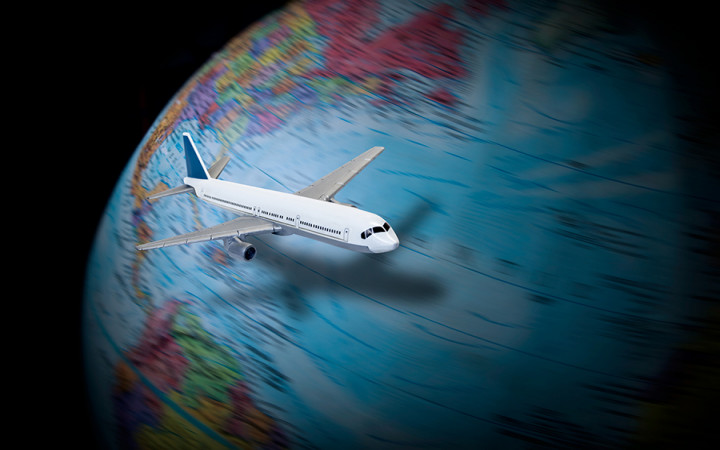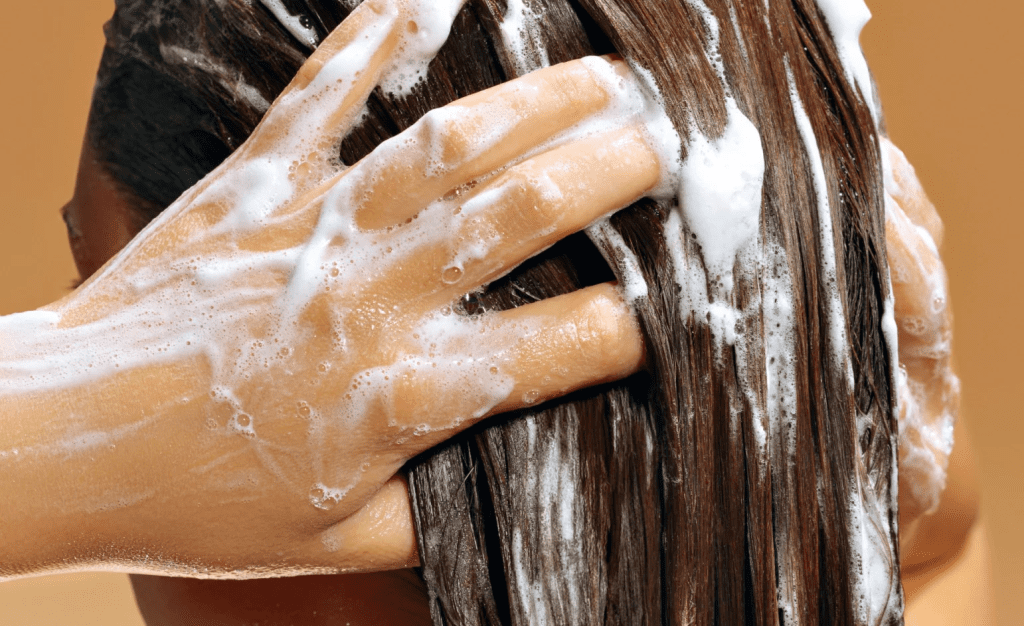Have you ever looked at a flight path on a map and wondered why airplanes take curved routes instead of flying in a straight line? Wouldn’t flying in a direct line be more fuel-efficient and faster? At first glance, it seems logical that a shorter distance would result in less fuel consumption, but in reality, aviation is far more complex.
Several factors determine flight paths, including the Earth’s shape, jet streams, weather conditions, and air traffic regulations. Let’s break down why airplanes rarely fly in a straight line and how their curved paths actually make flights more efficient.
The Earth’s Shape and the Great Circle Route

One of the biggest reasons airplanes don’t fly in a straight line is the Earth’s curvature. While we often view flight maps as flat, the Earth is a sphere, and the shortest path between two points is actually an arc called the Great Circle Route.
If you take a globe and use a string to connect two distant locations, you’ll notice that the shortest route often curves rather than follows a straight path. This is why flights from New York to Tokyo pass over the Arctic region rather than flying directly west across the Pacific Ocean.
Using the Great Circle Route helps planes save both time and fuel, even though it appears curved on a flat map.
Jet Streams and Weather Conditions Impact Flight Paths
Another key factor affecting airplane routes is jet streams—high-altitude wind currents that move at speeds of up to 200 mph (320 km/h). Pilots strategically plan routes to take advantage of these strong winds when possible.
Video : Why Airplanes Don’t Fly Straight
Flying with jet streams allows an airplane to get an extra push, helping it move faster while burning less fuel. Flying against a jet stream can slow down the plane significantly, increasing fuel consumption. Pilots often adjust routes to avoid strong headwinds, even if it means flying a longer distance.
Additionally, storms, turbulence, and severe weather conditions also play a role in determining flight paths. Airplanes may adjust mid-flight to bypass dangerous weather zones, thunderstorms, or areas with extreme turbulence.
Air Traffic Control and Flight Regulations
Air traffic isn’t a free-for-all where planes can just fly wherever they want. There are strict regulations set by aviation authorities and air traffic control (ATC) that dictate flight routes.
Some of these rules include restricted airspace, where certain areas, such as military zones, national security locations, and political zones, prohibit commercial flights from entering. Predefined flight corridors exist to avoid mid-air collisions, ensuring flights follow established air traffic lanes. Major airports handle hundreds of flights daily, so ATC ensures safe and efficient arrivals and departures.
Due to these regulations, airplanes cannot always take the most direct path and must follow designated routes instead.
Avoiding Air Turbulence for Passenger Comfort
Turbulence can make a flight uncomfortable, and pilots actively adjust routes to minimize rough air conditions. There are different types of turbulence, including thermal turbulence caused by warm air rising from the ground. Flying at higher altitudes helps avoid this.

Mechanical turbulence happens near mountains and rough terrains where wind patterns shift unpredictably. Clear-Air Turbulence (CAT) is sudden, strong air currents in high altitudes that are difficult to predict.
To ensure a smoother ride for passengers, pilots may deviate from the shortest path to avoid these turbulent areas.
Why Do Airplanes Sometimes Ascend Before Landing?
If you’ve ever been on a flight where the plane suddenly climbs just before landing, you might have felt a bit concerned. This maneuver is known as a go-around and is actually a common and safe aviation practice.
Some reasons why pilots perform a go-around include runway clearance issues. If another plane hasn’t cleared the runway in time, pilots must abort the landing and circle back. Poor weather conditions, such as poor visibility, strong crosswinds, or sudden gusts, can make a landing unsafe. If a plane is too fast, too high, or not properly aligned with the runway, the pilot will ascend and try again for a safer landing.
Go-arounds are standard procedures in aviation and ensure passenger safety above all else.
The World’s Longest Non-Stop Flight
While most flights follow curved paths, some routes push the limits of non-stop travel. The longest direct commercial flight in the world is from Singapore to Newark, New Jersey, USA.
This flight covers a distance of 10,400 miles (16,700 km) and takes approximately 18 hours and 45 minutes. It follows a carefully optimized path to balance fuel efficiency, wind conditions, and passenger comfort.
Video : Does Earth’s Rotation affect the Airplanes Speed & Flight Time
What Happens If a Plane Suddenly Loses Cabin Pressure?
A sudden drop in cabin pressure is often portrayed as a dramatic event in movies, but in reality, pilots are well-trained to handle it calmly.
When this happens, oxygen masks automatically deploy, and passengers should put them on immediately and breathe normally. The plane will descend to a safe altitude where oxygen levels are sufficient for breathing. The flight crew will assess the situation and communicate with passengers.
Losing cabin pressure doesn’t mean the plane will crash—pilots follow strict safety protocols to handle such incidents efficiently.
Final Thoughts: Why Curved Flight Paths Are More Efficient
While it may seem counterintuitive, airplanes take curved routes instead of straight lines to optimize flight efficiency, fuel usage, and passenger safety. Factors such as the Earth’s shape, jet streams, air traffic control, and weather conditions all play a crucial role in determining flight paths.
So next time you’re on a plane and see the route map displaying a curved flight path, remember there’s a lot of science and planning behind it to ensure you reach your destination as safely and efficiently as possible.
What is the ideal amount of shampoo
The debate over how often to wash hair is a tale as old as time—well, almost. For one family, this debate has turned into a heated argument, with a mother-in-law washing her hair twice a day and sparking concern that it might be too much. Let’s dive into the science of hair care, the risks of over-washing, and how to find the ideal routine for maintaining healthy locks.
Understanding Hair and Scalp Health

Healthy hair starts with a healthy scalp. The scalp naturally produces oils, called sebum, which protect and nourish your hair. While these oils are vital, excessive washing can strip them away, leaving your scalp dry and irritated. Imagine washing your favorite sweater too often—it might still look good at first, but over time, it loses its softness and becomes worn out. Your hair works the same way.
The Science Behind Shampooing
Shampoos are designed to clean your hair and scalp by removing dirt, oil, and product buildup. But here’s the kicker: not all shampoos are created equal. Some contain harsh detergents that cleanse too aggressively, while others are gentler, focusing on moisture and repair. The frequency of washing should take into account the type of shampoo being used and its effect on your scalp.
For instance, if your shampoo is sulfate-heavy, washing twice a day could be akin to scrubbing a non-stick pan with steel wool—effective in the short term but harmful in the long run.
The Risks of Over-Washing Hair
Washing your hair too often might sound harmless, but it can lead to several unwanted outcomes:
- Dryness and Breakage: Over-washing removes natural oils, leaving your hair brittle and prone to split ends.
- Irritated Scalp: A stripped scalp can become itchy and inflamed, potentially leading to dandruff or eczema.
- Oil Overproduction: Ironically, over-washing can make your scalp produce more oil to compensate, creating a never-ending cycle of greasy roots and frequent washes.
Think of it like overwatering a plant—what starts as good intentions can quickly turn into drooping leaves (or, in this case, frizzy strands).
Signs Your Hair Might Be Over-Washed
How can you tell if your hair care routine is too intense? Here are some telltale signs:
- Hair feels overly dry or frizzy
- Split ends appear more frequently
- The scalp feels tight, itchy, or flaky
- Hair lacks shine and looks dull
- Strands become unmanageable, no matter how much product you use
If you’re ticking off these boxes, it’s time to reassess your routine.
Expert Opinions on Hair Washing Frequency
So, what do the professionals say? Most experts agree that hair washing frequency should be tailored to your individual needs. Here’s a general guideline:
- Normal Hair: 2-3 times a week
- Oily Hair: Every other day or daily if necessary
- Dry or Curly Hair: Once or twice a week
However, lifestyle factors like exercise, climate, and product use play a big role. For instance, if you hit the gym daily, you might feel the need to wash your hair more often. Dermatologists and trichologists recommend consulting a professional for a personalized approach.
Factors That Affect Hair Washing Needs

Your hair type, scalp condition, and lifestyle all influence how often you should wash your hair. Let’s break it down:
- Hair Type: Fine hair tends to get oily faster, while coarse or curly hair holds onto moisture better, requiring less frequent washing.
- Lifestyle: If you live in a hot, humid climate or sweat a lot, more frequent washing might be necessary.
- Scalp Condition: A flaky scalp might benefit from targeted treatments rather than constant washing.
It’s all about balance—what works for one person might not work for another.
Finding the Right Balance for Your Hair
Striking the right balance takes a bit of experimentation. Start by reducing how often you wash your hair and observe how your scalp and strands respond. If they feel healthier, you’re on the right track. You might also consider incorporating alternatives like dry shampoo to extend the time between washes or co-washing (using conditioner instead of shampoo) for a gentler cleanse.
Tips for Maintaining Healthy Hair

Whether you’re washing twice a day or twice a week, here are some tips to keep your hair in top shape:
- Use a Gentle Shampoo: Look for sulfate-free or moisturizing formulas that won’t strip your hair of its natural oils.
- Condition Regularly: A good conditioner can replenish moisture and protect against damage.
- Limit Heat Styling: Overusing heat tools like flat irons and blow dryers can weaken hair.
- Protect Against Environmental Damage: Wear a hat or use a UV-protectant spray to shield your hair from sun damage.
- Eat a Balanced Diet: Foods rich in vitamins and minerals, like biotin and omega-3s, contribute to hair health.
Think of your hair as a prized plant—it needs the right mix of water, nutrients, and care to thrive.
Conclusion: Striking the Perfect Hair Care Routine
The “right” amount of hair washing varies from person to person. While washing twice a day might be overkill for some, it could feel necessary for others based on their lifestyle or hair type. The key is finding a routine that works for your unique needs without overloading your scalp or strands.
If you’re concerned about a loved one’s habits (like your mother-in-law’s double-daily washes), approach the conversation with curiosity and kindness rather than criticism. After all, hair care isn’t one-size-fits-all—it’s about finding balance and keeping those locks looking and feeling their best.



Leave a Reply